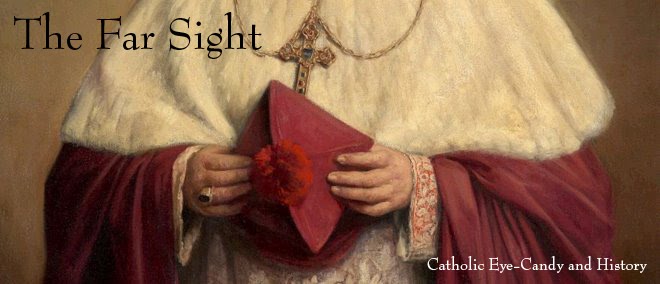Now I found another interesting report dealing with the customs during Holy Week in Quito. The French naturalist Alcide D'Orbigny recorded in his work A Picturesque Voyage Across the Two Americas the amazement felt by the eyewitness account of his countryman, Raigecourt, during his Holy Week visit in 1841, where he wrote about the Good-Friday-Procession: "A thousand saintly souls led the procession. A cortege of musicians masked and draped in purple robes. a multitude of negroes dressed uniformly in royal blue robes. two lines of nuns. a huge hubbub of individuals dressed in every sort of vestment, armed with sticks, sabres, swords, lances and lanterns to hand. These represented the Jews."
"These documents give an idea of the huge size of this procession, in which absolutely the whole of the city of Quito acted or watched. Nobody was left out!" explains Alfonso Ortiz Crespo, an historian of Quito and author of a work on Holy Week during the Spanish Colony. According to Crespo, soon after the establishment of the town in the 16th century, this Christian ceremony of remembrance and reflection became one of the most impressive and well attended throughout the Spanish Empire. Despite this fervour and popularity, the event fell foul of liberal ideology in the mid–19th century when President José María Urbina suppressed it entirely.
The celebration couldn’t be completed rubbed from popular memory, and by the 20th century Holy Week had recovered its place in Quito society. In 1964, the chronicler of the city, Luciano Andrade Marín, wrote "Nothing was more grandiose or more solemn in Quito in the time of my grandparents than the Good Friday procession." His description of the celebration evokes “an entire legion of faithful penitents carrying thick ropes around their necks and even signs asking for mercy, who made their way on their knees, fainting at every turn. These were pursued by horrible devils who tempted the penitents, harsh–looking Jews, saintly souls in white robes, capricious dancers and float–bearers begging for alms”. Andrade Marín assures us that the height of the tops of the cucuruchos’ hats (people wearing traditional conical, pointed–hat robes, like those worn in Spain and famously by the Klu–Klux Klan) touched the balconies of the city where citizens gathered in huge numbers to watch the impressive procession.
Here is a picture of the procession drawn according to the 1841-report (it's a rather large file, but you want to see the details):



No comments:
Post a Comment